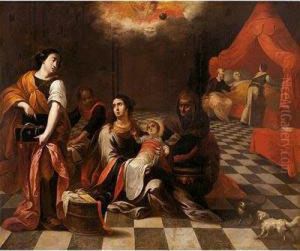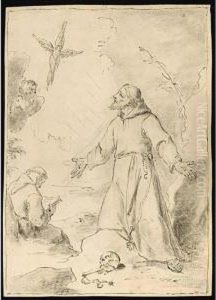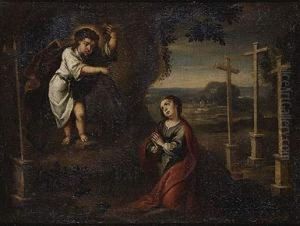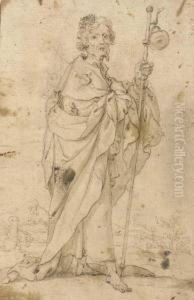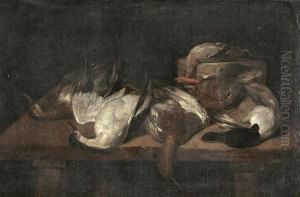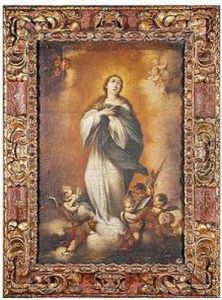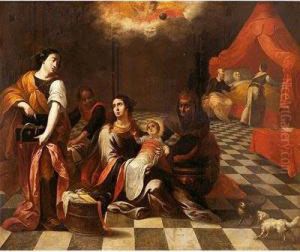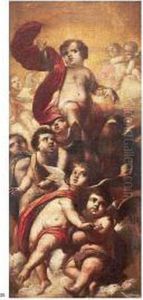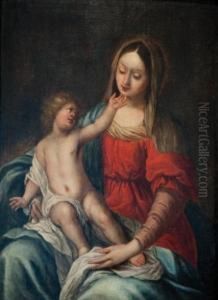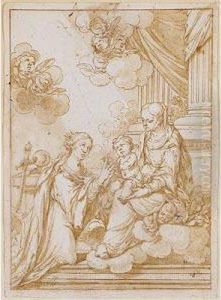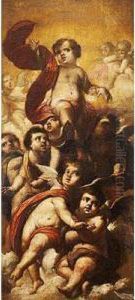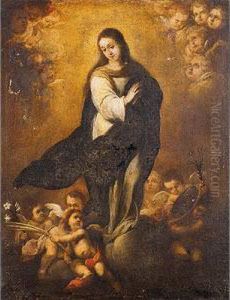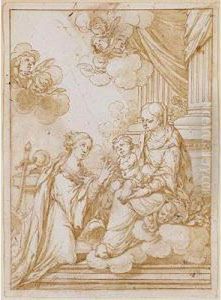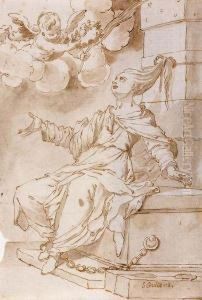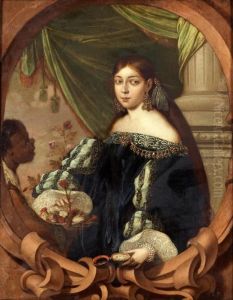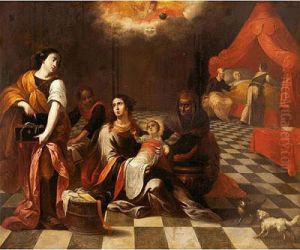Cornelis Iii Schut Paintings
Cornelis III Schut was a Flemish Baroque painter and draughtsman, born in 1629 in Antwerp, Belgium. He was part of the Schut family of artists, which included his father, Cornelis Schut II, who was also a painter. Cornelis III was known for his contributions to the Baroque movement, a period characterized by dramatic expression, rich colors, and intense light and shadow contrasts.
Schut received his early training from his father and possibly other family members, as was common in artist families of the time. He later became a master in the Guild of Saint Luke in Antwerp, which was an important milestone in his career, marking his acceptance and recognition as a professional artist within the Antwerp art community.
Throughout his career, Cornelis III Schut worked on various commissions for religious institutions and private patrons, producing altarpieces, portraits, and mythological scenes. His works are noted for their dynamic compositions and skillful use of color, which have been appreciated for their emotional intensity and technical mastery.
Despite his contributions to the Flemish Baroque, Cornelis III Schut remains less well-known than some of his contemporaries, such as Peter Paul Rubens and Anthony van Dyck. However, his works are considered important in understanding the breadth and diversity of the Flemish Baroque movement. Schut's art reflects the rich artistic environment of Antwerp during the 17th century, a city that was a significant center for art and culture in Europe at the time.
Cornelis III Schut died in 1685 in Antwerp, leaving behind a body of work that continues to be studied and appreciated by art historians and enthusiasts. His legacy contributes to our understanding of the Flemish Baroque period and the broader European artistic heritage.
